Rapa Nui (Easter Island)

For context:
I went to mainland Chile for work, and managed to extend my stay and visit Rapa Nui (never did I think it would be possible to go there - bucket list checked!).
After the pandemic, a few new regulations were put in place regarding how to access the historic sites and I was very confused when researching for my own trip - hence why I'm writing this guide now.
I visited from 2nd - 5th April 2024, so this info was accurate at that time.
Below is all the information I wish I'd found when planning my trip.
I'll start with more practical information, and at the end I list all the spots that I visited and activities I did.
Happy exploring!
Getting There
When entering Chile, you have to fill in a "SAG form" (https://djsimple.sag.gob.cl/etapas/ejecutar/27385173) to declare any animal/plant products you might be carrying into Chile.
To enter Rapa Nui, you need to fill in a special form (https://ingresorapanui.interior.gob.cl/#) to provide some information, namely select your accommodation from the list of approved places.
You can fly from Santiago to Hanga Roa (the main town), which takes about 5h. LATAM runs this flight and there's a trick for booking it!
!!! If you're not Chilean, book with LATAM's Chilean website nonetheless. Use "continue as guest" and use Google Translate if you don't get the Spanish. The trip was half the price compared to if I had used any European version of the website (return flight Santiago-Hanga Roa was ~300€ vs ~600€).
Flights are not so common, so be careful between booking flights and accommodation to make sure they match. Additionally, it's not uncommon for flights to be postponed by a day or so because of strong winds. Think twice before booking the flight from Rapa Nui to Santiago on the same day as your flight home, just in case this happens...
VERY IMPORTANT:
!!! when you go to Santiago airport, there are two entrances for domestic flights. When going to Rapa Nui, you have to enter through the 2nd floor! This entrance will take you through immigration control (I know Rapa Nui is still Chile, but idk, trust me here). They will give you a paper that you have to hand in at the boarding gate.
I CANNOT STRESS THIS ENOUGH: 2nd floor! There will be a big sign clearly indicating the Rapa Nui flights are through there.
You will be able to get to the boarding gate even if you go through the other entrance, so pay attention. I nearly lost the flight because I didn't know I needed the paper from immigration control. Don't make the same mistake I did :(:
The other option is going by cruise ship - definitely not budget friendly.
Accommodation
I was hosted at Hostal Pua Vaenga, in Hanga Roa. The owners were super nice and the booking included airport pick-up/drop-off and a gorgeous lei (flower necklace). For 3 nights, I paid ~100€.
It's about 25/30 minutes from downtown and the marina. It's fine to walk, but keep in mind that it's uphill when you're going from the marina to the hostal lol. If you rent a vehicle, there's a parking lot and you can avoid walking uphill ;)

Currency & payments
Rapa Nui uses the Chilean peso (as the rest of the country).
I was under the impression that the island would work mostly with cash (info I had been given from 2022), but in 2024 most places allowed payment by card.
There are a few ATM machines in Hanga Roa. I tried once but couldn't get it to work for some reason. I was using Revolut and could pay with it everywhere with no trouble.
Tipping is expected in cafes/restaurants and the bill will have a suggested amount that you can refuse, accept, or exceed.
Electrical adaptors
Many places in Chile have type L plugs (three round pins in a straight line), though officially, type C plugs (two round pins) are also used.
My accommodation had type L, which meant I could plug my EU phone/tablet charger, but not my EU laptop charger (the charger pins were ~1mm larger than the wall socket pins). If you need to charge more powerful equipment, it's best to buy an adaptor.
Getting around the island
I chose not to rent any vehicle. I walked from the accommodation to the marina/downtown (~25 minutes), where there were supermarkets, restaurants, natural pools, tour agencies, etc, and then signed up for a group visit with transport included to see the island outside of Hanga Roa.
I also hiked to the top of the Orongo crater (which was maybe not the best idea for the level of humidity that day, but I survived).
To be honest, I didn't see any buses and have no idea if any kind of public transportation exists.
You can rent a car/motorbike/bike and explore the island by yourself, but you'll need a guide to enter the historic sites - see the last section. Having your own vehicle is worth it if you want to go to Anakena Beach (in the North of the island) and chill for a whole day, or to see the sunrise at Ahu Tongariki.
Food
As I was on a budget (and I'm not the biggest foodie), I opted for supermarket trips and cooking at home more often.
That being said, the specialties of Rapa Nui are mostly about the fresh fish (as you'd expect from an island).
The Polynesian ceviche is supposedly very good (a friend recommended it).
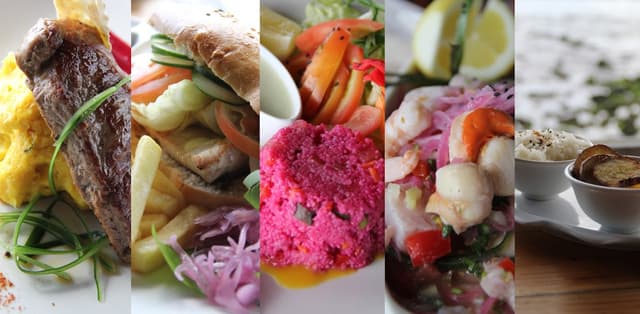

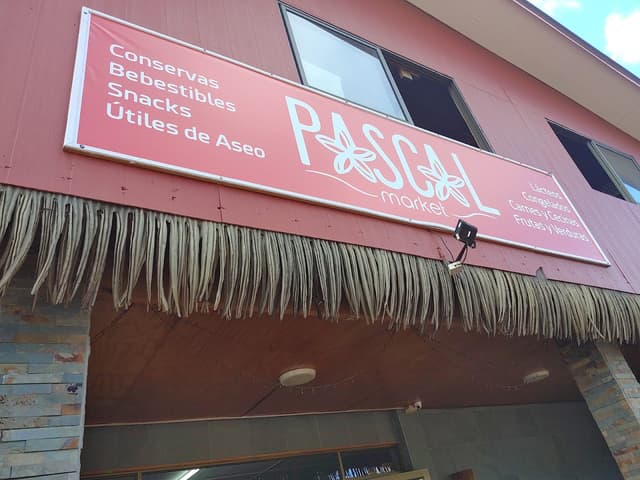
Souvenirs
I bought most of my souvenirs from island artisans at the Mercado Artesanal, or along the street Te Pito o Te Henua (walking down from the catholic church).
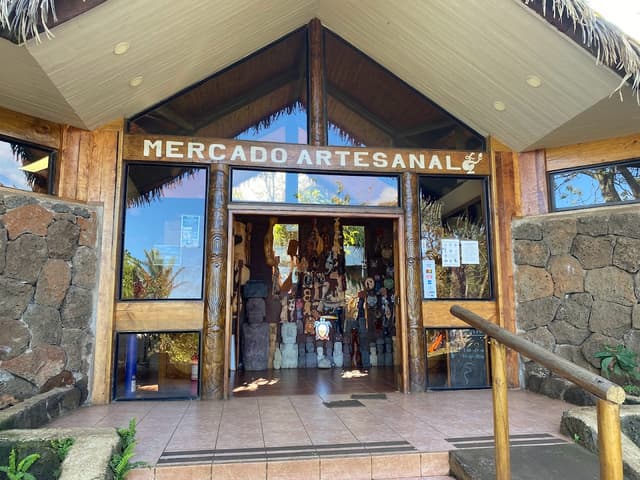
Activities
- National Park (buy ticket and book guide/group visit!)
LOGISTICS
The majority of historical sites of the island are part of the Rapa Nui National Park (yes, this includes most of the Moai statues). To visit them, you need the park ticket and a guide (take your passport as well because they check the name on the park ticket).
Ticket website: https://rapanuinationalpark.com/
Before the pandemic, it was not necessary to book a guide to access the sites, but now it is. You can book (1) a private visit or (2) a group visit.
(1) On the National Park website, there is a list of accredited guides who do private tours. Reach out to them with the contacts provided, let them know when you're going, what you'd like to visit (or what they recommend), and ask what their rate is. In some cases, you may have to rent a vehicle (e.g. the guide does not drive and you need to pick them up). Don't be shy, they are usually very nice, so just message them.
(2) Book a group tour that includes transport (and may even include meals). I booked a one-day island trip with Mahinatur (link below), and the guide was Luis. The visit's cost was 80 000 CLP (~80€) and included a very nice (seated, hot) lunch.
MAIN SPOTS
In the group visit, we went to
- Rano Raraku (the source of the moai),
- Ahu Tongariki (restored moai platform),
- Ahu Akahanga (ancient village with destroyed platform),
- Te Pito Kura (meteorite),
- Anakena (beach with moai platform - one of the few places where you don't need a guide!).
Another popular point of the park is the Orongo crater, which is an old volcano crater with a very particular ecosystem within it. Looking down at the crater is free, but you need a guide to access the interpretation centre and learn about the cult of the Birdman.
!!! A typically recommended adventure is to watch the sunrise at the moai platform of Ahu Tongariki. If you are interested in this, here is the tip our guide gave us: don't book the organised trips! Instead, rent a car (or whatever) and park outside of the historical site, directly facing the moai - yes, you can see them from outside because the "fence" only goes up to your waist. This way, you are elevated enough to see the ocean behind the platform (see picture below)!!! The view is much better than if you are right next to the platform ;)
- Diving & Snorkeling
Diving and other kinds of water activities are popular in Rapa Nui. I went diving for the first time there, with Orca Diving Center, which I highly recommend! They even take mindblowing pictures of you underwater during the dive :) The cost was ~70€.
- Beaches (and turtle watching!!!)
Anakena beach has thin white sand, but all the beaches I saw at Hanga Roa are rocky natural pools. You might want to bring those snazzy fashionable rubber sandals if you care about your feet lol.
In the beaches/sea pools close to the marina, it is common to see sea turtles. Don't interact with or chase them, but it is an incredible show to contemplate them from so close.
- Others (things I didn't do, but are nice)
See a Polynesian dance show.
Ride horses through the island.
Hike some trails.
Go to the Rapa Nui museum in Hanga Roa (free, accepts donations).
LINKS
TOUR AGENCY:
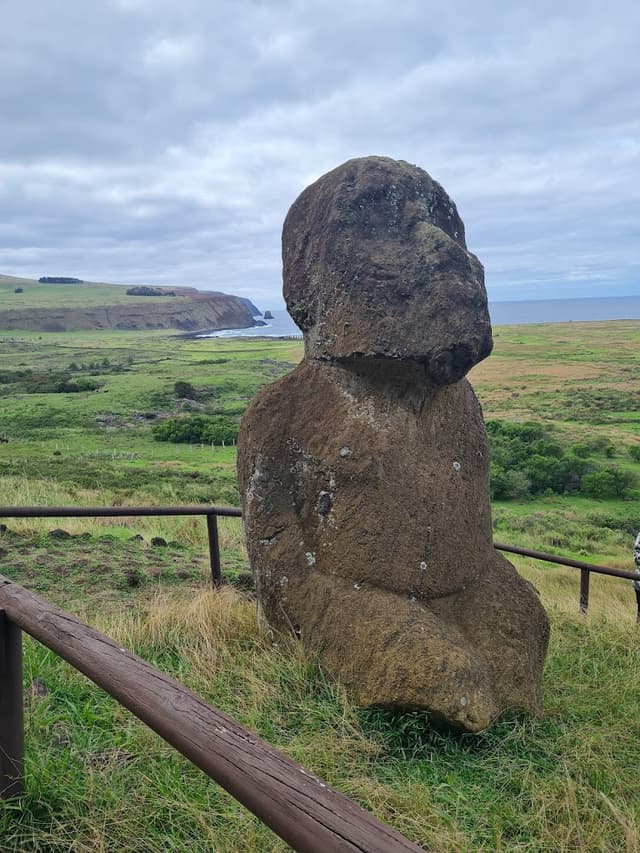
MAIN SPOTS:
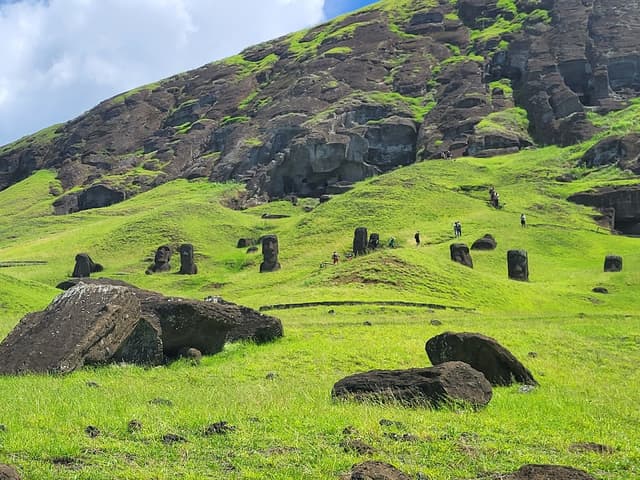
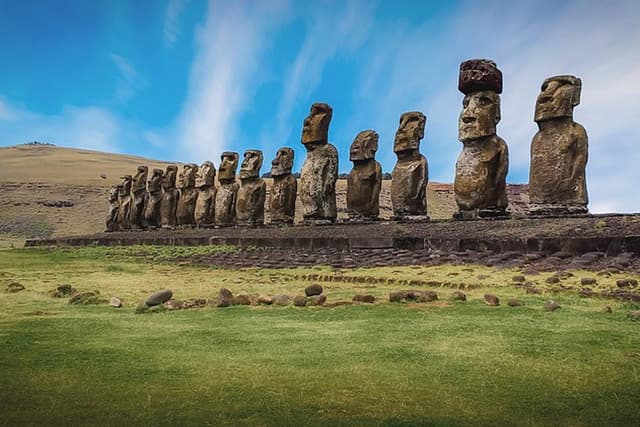
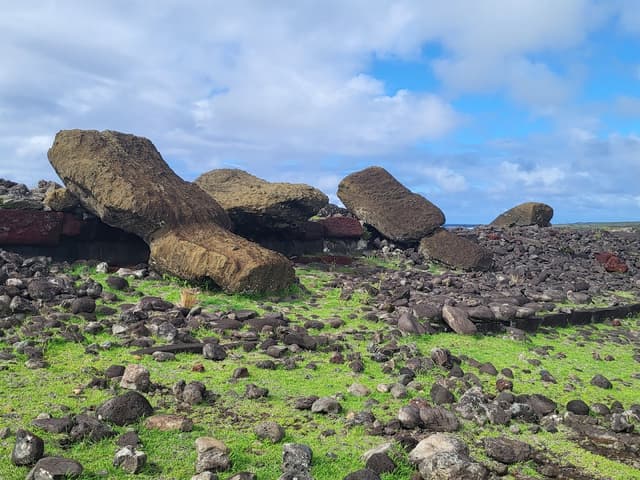
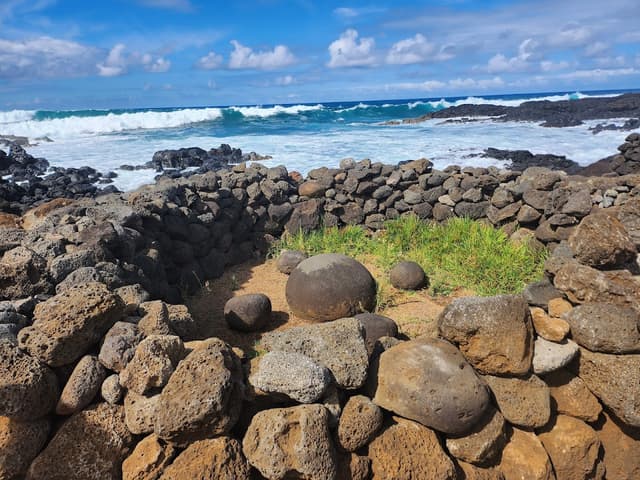

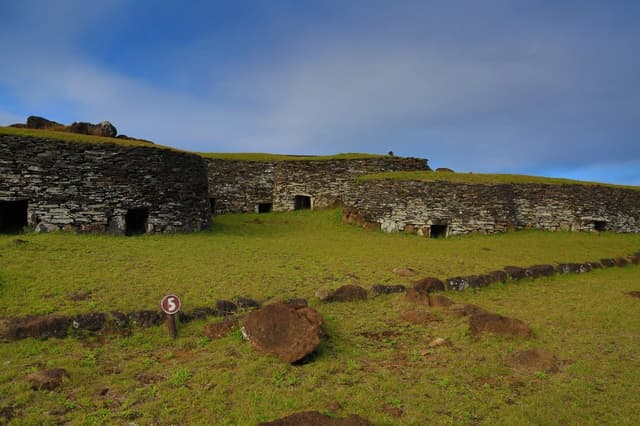
DIVING CENTER:
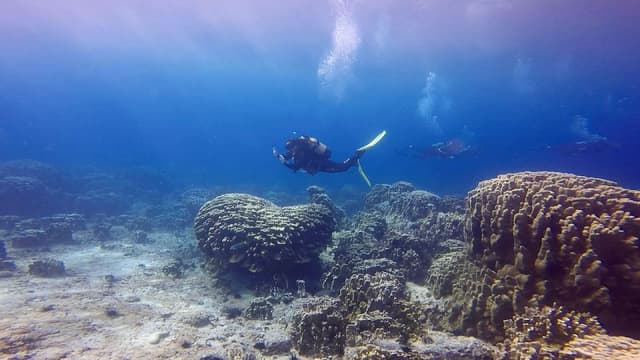
This was my exact itinerary:
- Day 1: arrive at ~14h, drop stuff at hostal, walk downtown to get familiar with the place, go for a swim and stop by the supermarket.
- Day 2: full-day tour, then swim and watch the turtles.
- Day 3: diving in the morning, lunch downtown, hike to Orongo crater, come back down and go for a swim.
- Day 4: more swimming and turtle watching, buy souvenirs, lunch downtown, head to the airport at ~14h.
Thank you for reaching the end of the guide.
As you can tell, this is not an exhaustive one, as I was only there for a few days, but I believe it covers the most interesting places and makes for a very pleasant trip.
If you found this guide helpful, please consider leaving a tip :)
Even just a few bucks is very much appreciated!
Have a wonderful time in Rapa Nui!!!
The home for unique & authentic travel